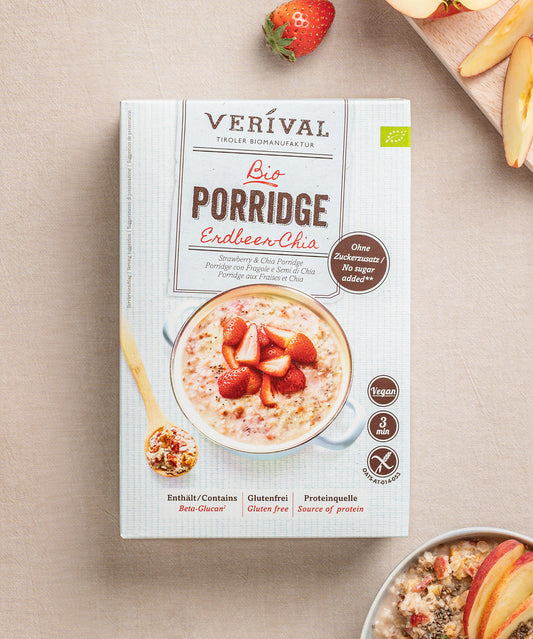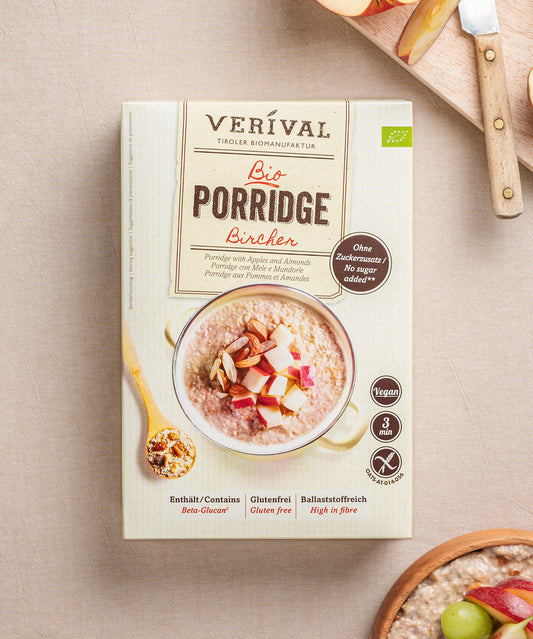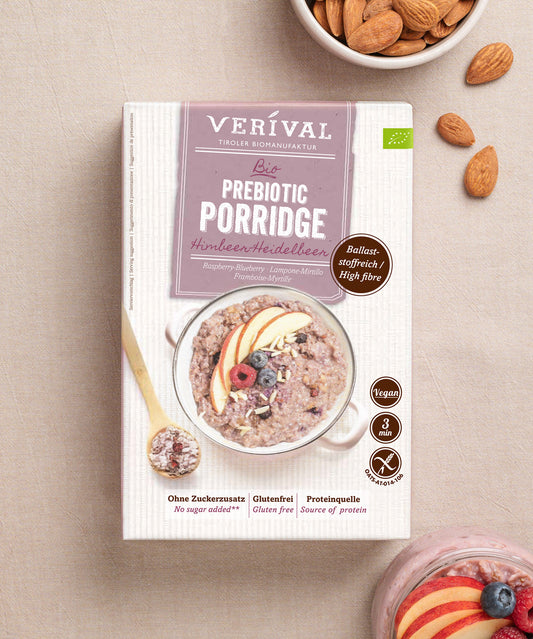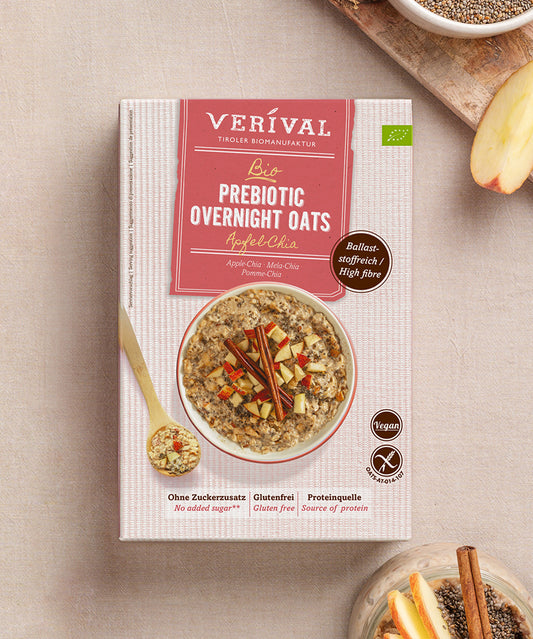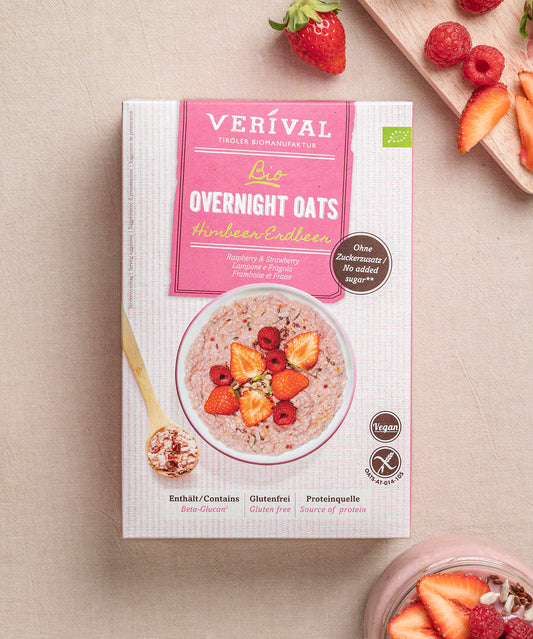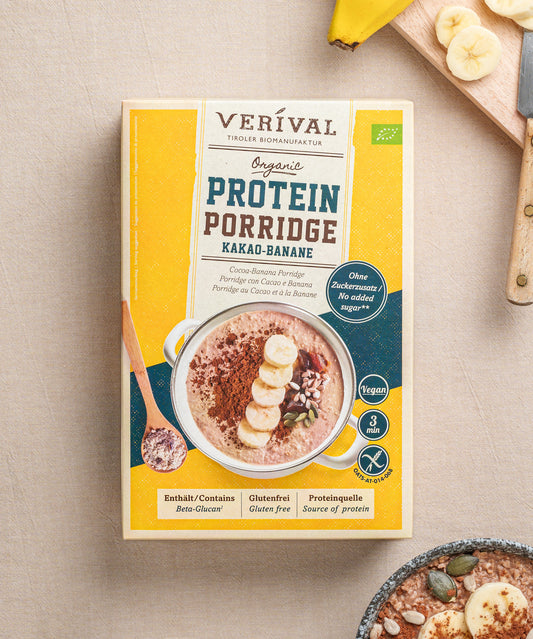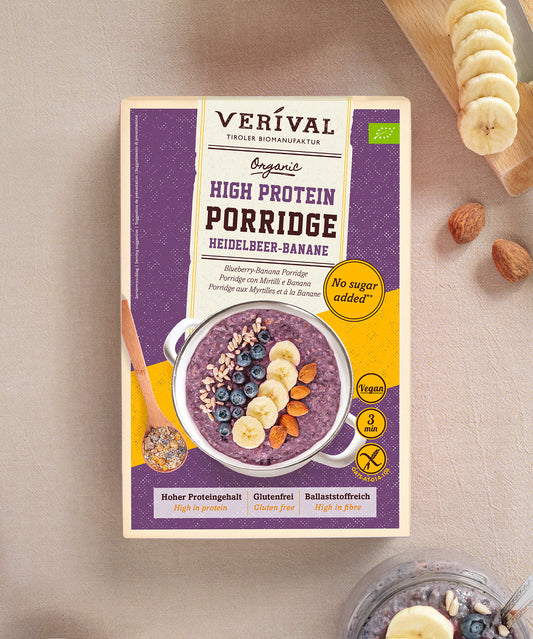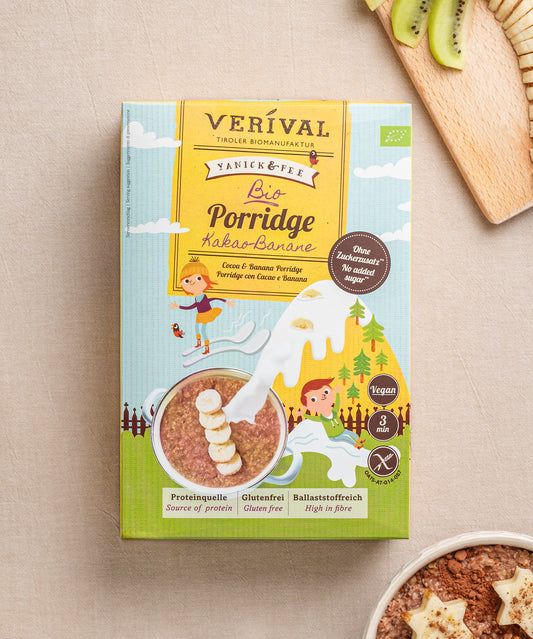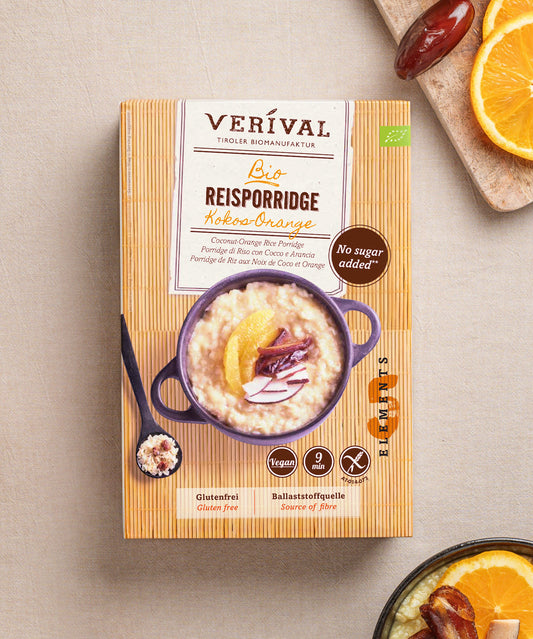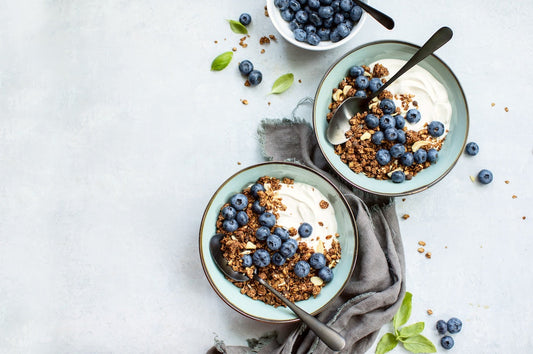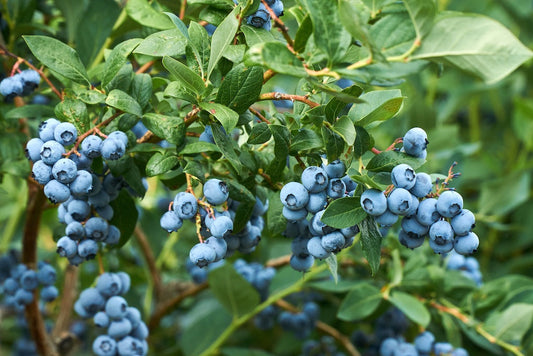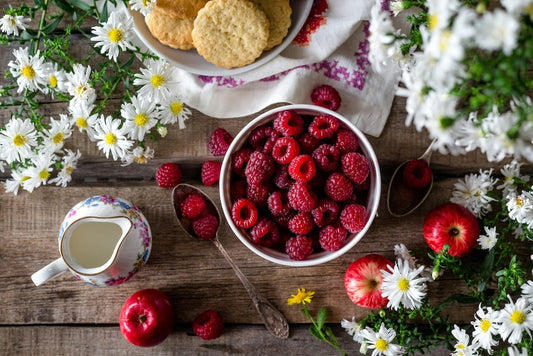Dietary fiber – high-fiber nutrition is initially viewed negatively by many people. Fiber is not exactly known for its positive properties. However, this does not apply to dietary fiber in food. Quite the opposite!
For several years now, it has been known that these substances are part of a balanced and healthy diet. But it wasn't always that way: not so long ago, fiber was considered worthless because it was thought to have no benefit for the human body.
However, doctors and nutritionists now know better: fiber is now considered a necessary and healthy component of the diet.
Sources of fiber – the top foods
At the end of this article, you will know exactly what foods are high in fiber. We will reveal everything you always wanted to know about fiber in today's blog post.
They are particularly important for a healthy breakfast to get the day off to a good start. But more about that later!
Discover a high-fiber breakfast from Verival
What is fiber?
What exactly is fiber? Dietary fiber is basically a fiber-rich food component, usually found in plant-based foods. It is virtually non-existent in animal products. A high-fiber diet can therefore only be achieved if sufficient plant-based foods are consumed.
A distinction is made between water-soluble and insoluble dietary fiber – both have different properties.
Soluble dietary fiber
Soluble dietary fiber includes pectin, gums, beta glucan, and certain hemicelluloses. They have a high water-binding capacity, which means they can bind water well and thus transport more toxins out of the gastrointestinal tract due to their increased volume. Water-soluble dietary fibers occur in large quantities, especially in oat bran, barley and legumes. These fibers act as a swelling agent by binding large amounts of water. They swell up by absorbing water in the intestine. This increases the volume of the stool and stimulates intestinal movement.
Insoluble dietary fibers
Insoluble dietary fiber is significantly less effective at binding water. This group of dietary fibers includes cellulose, i.e. plant fibers, and lignin. In addition, water-insoluble dietary fiber is almost not broken down by bacteria – it is not fermented in the intestine. Wheat bran, for example, contains much more insoluble fiber than soluble fiber.
This fermentation is an important process from a health perspective. This is because short-chain fatty acids are produced during this process, such as butyrate, which is thought to have an anticarcinogenic effect.
Are dietary fibers healthy?
Yes, fiber is healthy because increased consumption is associated with numerous health benefits. Consuming high-fiber foods leads to improved satiation and a smoothly functioning digestive process. The German Nutrition Society (DGE) also describes this about fiber.
In addition, the intestinal bacteria that are so important for health are positively influenced, which leads to healthy intestinal flora and you can build a healthy intestinal flora. A high fiber intake can therefore offer many advantages. Dietary fiber serves as food for the “good” intestinal bacteria and ensures a healthy intestinal mucosa and a well-functioning digestive tract.
The health benefits of fiber range from a healthier cholesterol level to an improved insulin response and the prevention of common diseases, including diabetes mellitus, obesity, coronary heart disease and other cardiovascular diseases.
But let's take a closer look at the health benefits beyond gut health.
Build intestinal flora - read more now
Dietary fiber regulates blood sugar levels
Dietary fiber helps to maintain a constant blood sugar level and can also prevent diabetes. This is because high-fiber foods fill the stomach but provide little or no energy, thus preventing blood sugar levels from skyrocketing. A certain dietary fiber, which is also found in oats, for example, should not go unmentioned in this context due to its positive effect on the risk of diabetes:
Dietary fiber is good for digestion
As already mentioned, the consumption of fiber leads to the bowel being relieved. This was the result of a study in the British Medical Journal. They help feed the intestinal flora and generally improve digestion. In addition, the risk of intestinal diverticula is reduced, which can lead to abdominal pain and bloating.
Fiber against cardiovascular diseases
Another important aspect is that fiber helps prevent cardiovascular diseases. People who consume high-fiber foods have a 24-56% higher chance of not developing cardiovascular, infectious or respiratory diseases. Dietary fiber lowers the cholesterol level in the blood and is therefore very healthy.
Do dietary fibers help you lose weight?
Dietary fibers fill you up and prevent cravings. With a high-fiber diet, you can build up a long-lasting feeling of satiety more quickly.
This prevents you from getting hungry again quickly after eating and from resorting to unhealthy snacks. So it can be assumed that a high-fiber diet can definitely help you lose weight.
Ideally, you should consume about 30 grams of fiber per day. However, significantly less is consumed in Germany and Austria. That's why we describe in the next section which foods contain fiber and how you can integrate a high-fiber diet into your diet.
Have you ever had your BMI calculated? Take a look at our BMI calculator and learn more about it.
What is a high-fiber diet?
A high-fiber diet is a diet in which, as the name suggests, care is taken to ensure an adequate intake of fiber. The reason for this is the many health benefits attributed to fiber.
In practice, a high-fiber diet often means switching to the whole grain version. This is because the outer layers of the grain are also processed in whole grains, which is why whole grain products have a higher fiber content.
But bran, such as oat bran, ground flaxseed or psyllium husks, are also among those products that are considered particularly high in fiber and are therefore desirable in the diet. In addition, it is recommended to eat two portions of fruit a day. This is because many types of fruit, such as apples, contain not only plenty of fiber in the peel but also other healthy micro- and phytonutrients.
What are the benefits of a high-fiber diet?
A high-fiber diet can help lower cholesterol and prevent a number of diseases. These include relatively harmless digestive problems as well as heart disease and even bowel cancer.
But how does it work? Let's take another look at dietary fiber. Dietary fiber is mostly carbohydrate and is found primarily in grains, fruits, vegetables and legumes. Dates also have a healthy amount of fiber. The health-promoting processes differ slightly depending on the type of fiber. However, the product is always positive.
For example, cellulose and inulin help to increase the number of important intestinal bacteria, which in turn leads to healthy intestinal flora.
The water-binding capacity of dietary fiber increases the volume of stool, making it easier to pass. This stimulates digestion and helps to prevent constipation. So, if you like, it optimizes your bowel movements.
The effect of dietary fiber in lowering unhealthy LDL cholesterol is also interesting. The exact mechanism by which this occurs is controversial. One hypothesis is that an increased intake of fiber promotes the excretion of bile acids. The effect: your body increases its own bile acid production, which causes it to convert more cholesterol into bile acid. This lowers the blood cholesterol level, according to the hypothesis.
On the whole, it can be said that fiber is responsible for faster intestinal activity. They also ensure a longer-lasting feeling of satiety, but cause the blood sugar level to rise less sharply after a meal because they are not fully digested.
Discover a healthy high-fiber breakfast
Fiber: Recommended daily amount
According to the German Nutrition Society (DGE), you should consume at least 30 grams of fiber daily. 125 grams of legumes and 200 grams of whole grain products per day can be enough to meet your daily needs.
To maximize the health benefits, it's best to choose foods that are naturally high in fiber.
What are high-fiber foods?
High-fiber foods are very easy to incorporate into a healthy diet. You're probably already eating some of them. Fiber is mostly found in plant-based products – you won't find it in meat. The easiest way to get fiber is probably to eat fruit. Apples are perfect as a snack between meals.
The old saying “An apple a day keeps the doctor away” is true after all! Whole grain pasta is also an important part of a high-fiber diet. Those who like to eat pasta have a clear advantage here. Simply swap the “normal” pasta for whole grain pasta – et voila, fiber!
We have put together a few more of the most fiber-rich foods to help you increase the amount of fiber in your diet:
- Stone fruit (plums, apricots)
- Whole grain products (whole grain flour, cereal flakes, whole grain pasta, brown rice)
- seeds (chia seeds, for example, contain 34.4 g of fiber per 100 g; flax seeds)
- vegetables (broccoli, artichokes)
- oats (oat bran, oat flakes)
- legumes (chickpeas, beans, lentils)
- Other fruits and vegetables (dried fruit, Jerusalem artichokes, cauliflower, etc.)
It's best to mix up the various sources of fiber in your diet to get the maximum health benefits.
Foods high in fiber – discover the list and tips
Foods high in fiber: These foods are unsuitable
Although many plant-based foods are high in fiber, this is not the case for all of them. In particular, animal products and highly processed foods are low in fiber.
In practice, this means that you should replace foods with little fiber with healthy sources of fiber. For example, you could swap the low-fiber white bread you eat for dinner with two slices of whole grain bread.
In general, it is advisable to replace white flour, which is usually low in fiber, with its whole grain counterparts. As you can see, this substitution method is particularly easy when it comes to grain products, which make up a significant proportion of daily calorie intake in the classic Central European diet.
Refined foods have virtually no fiber.
What fiber for breakfast?
Fiber for breakfast not only aids digestion, but also keeps you feeling full for longer. This helps to prevent cravings. It's particularly easy to incorporate high-fiber foods into your breakfast: porridge, warm oats, muesli, whole grain bread, flaxseed – the list goes on and is, above all, delicious. Wholegrain muesli and yoghurt are a great base. A particularly good example of a high-fiber recipe is oat porridge with various toppings, such as almonds or flaxseed. A real fiber bomb! You can also find more high-fiber recipes with us.
High-fiber recipes that are easy to prepare
There are endless ways to lay the foundation for a healthy diet in the morning – and we are happy to help! With our filter function in the online shop, you can easily discover the breakfast products that are the highest in fiber. To do this, click on “Filter” in the breakfast overview and then select either “Fibre source > 3g/100g” or “High fibre content > 6g/100g”. This way you can quickly and easily find the basis for your high-fibre breakfast.
Discover high-fibre breakfasts from Verival
Fibre table – Which foods have the highest fibre content?
The top 3 sources of fiber are: 1st place: wheat bran (45.1 g/ 100 g), 2nd place: flaxseed (38.6 g/ 100 g), 3rd place: chia seeds (34.4 g/ 100 g).
All further details about the fiber table.
Frequently asked questions
Where do you find the most fiber?
Some of the best sources of fiber include cereals such as corn and wheat bran, barley and oats. But fruits such as goji berries, bananas and apples are also full of fiber. Other recommended sources of fiber include potatoes, artichokes, legumes, especially lentils and beans.
Which types of fiber are good for your gut?
Almost all types of fiber have a positive effect on the gut. The intestinal flora is thus promoted by both soluble and insoluble fiber. The only thing that differs are the mechanisms that are decisive for the health-promoting effect.
Are oats high in fiber?
Oats contain around 10 grams of fiber per 100 grams. This means that you can cover your daily fiber requirement with just 300 grams of oats.
Is it good to eat fiber in the evening?
When you eat fiber, it doesn't matter much. What is important is that you eat some. Many people get just 15 grams a day in their daily diet – but the recommended daily intake is a minimum of 30 grams. So if you find it easier to eat fiber in the evening, go for it.
Which vegetables have the most fiber?
Cauliflower, broccoli, artichokes, Jerusalem artichokes and black salsifies are considered to be particularly high in fiber.
Fiber table – which foods have the highest fiber content?
The top three sources of fiber are: 1. Wheat bran (45.1 g/100 g), 2. Flaxseed (38.6 g/100 g), 3. Chia seeds (34.4 g/100 g).
Which food is high in fiber?
Fiber is mostly found in plant-based products – you won't find it in meat. Stone fruit (plums, apricots), whole grain products (whole grain flour, whole grain pasta), seeds (chia seeds, flax seeds), vegetables (broccoli, artichokes), oats (oat bran, oatmeal), legumes (chickpeas, beans, lentils), and other fruits and vegetables (dried fruit, Jerusalem artichoke, etc.) are high in fiber!
What are examples of dietary fiber?
There are two types of dietary fiber: soluble and insoluble. Soluble dietary fiber includes pectin, gums, beta glucans and certain hemicelluloses. They have a high water-binding capacity – in other words, they can bind water well and thus transport more toxins out of the gastrointestinal tract due to their increased volume. Soluble fiber occurs in large quantities in oat bran, barley and legumes. Insoluble fiber has a significantly more limited ability to bind water. Representatives of this fiber group include cellulose, i.e. plant fibers, and lignin. In addition, insoluble fiber is almost not broken down by bacteria in the intestine, i.e. it is not fermented.
What is the effect of dietary fiber?
A high-fiber diet can help lower cholesterol and prevent a number of diseases, including relatively harmless digestive problems, heart disease and even colon cancer. So it's important to include fiber in your diet.


